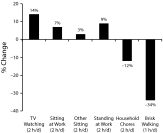Contribution of the Nurses' Health Studies to Uncovering Risk Factors for Type 2 Diabetes: Diet, Lifestyle, Biomarkers, and Genetics
- PMID: 27459454
- PMCID: PMC4981796
- DOI: 10.2105/AJPH.2016.303314
Contribution of the Nurses' Health Studies to Uncovering Risk Factors for Type 2 Diabetes: Diet, Lifestyle, Biomarkers, and Genetics
Abstract
Objectives: To review the contribution of the Nurses' Health Study (NHS) and the NHS II to addressing hypotheses regarding risk factors for type 2 diabetes.
Methods: We carried out a narrative review of 1976 to 2016 NHS and NHS II publications.
Results: The NHS and NHS II have uncovered important roles in type 2 diabetes for individual nutrients, foods, dietary patterns, and physical activity independent of excess body weight. Up to 90% of type 2 diabetes cases are potentially preventable if individuals follow a healthy diet and lifestyle. The NHS investigations have also identified novel biomarkers for diabetes, including adipokines, inflammatory cytokines, nutrition metabolites, and environmental pollutants, offering new insights into the pathophysiology of the disease. Global collaborative efforts have uncovered many common genetic variants associated with type 2 diabetes and improved our understanding of gene-environment interactions. Continued efforts to identify epigenetic, metagenomic, and metabolomic risk factors for type 2 diabetes have the potential to reveal new pathways and improve prediction and prevention.
Conclusions: Over the past several decades, the NHS and NHS II have made major contributions to public health recommendations and strategies designed to reduce the global burden of diabetes.
Figures



References
-
- Cornelis MC, Hu FB. Gene-environment interactions in the development of type 2 diabetes: recent progress and continuing challenges. Annu Rev Nutr. 2012;32(1):245–259. - PubMed
-
- Manson JE, Stampfer MJ, Colditz GA et al. Physical activity and incidence of non-insulin-dependent diabetes mellitus in women. Lancet. 1991;338(8770):774–778. - PubMed
Publication types
MeSH terms
Substances
Grants and funding
LinkOut - more resources
Full Text Sources
Other Literature Sources
Medical
Miscellaneous

